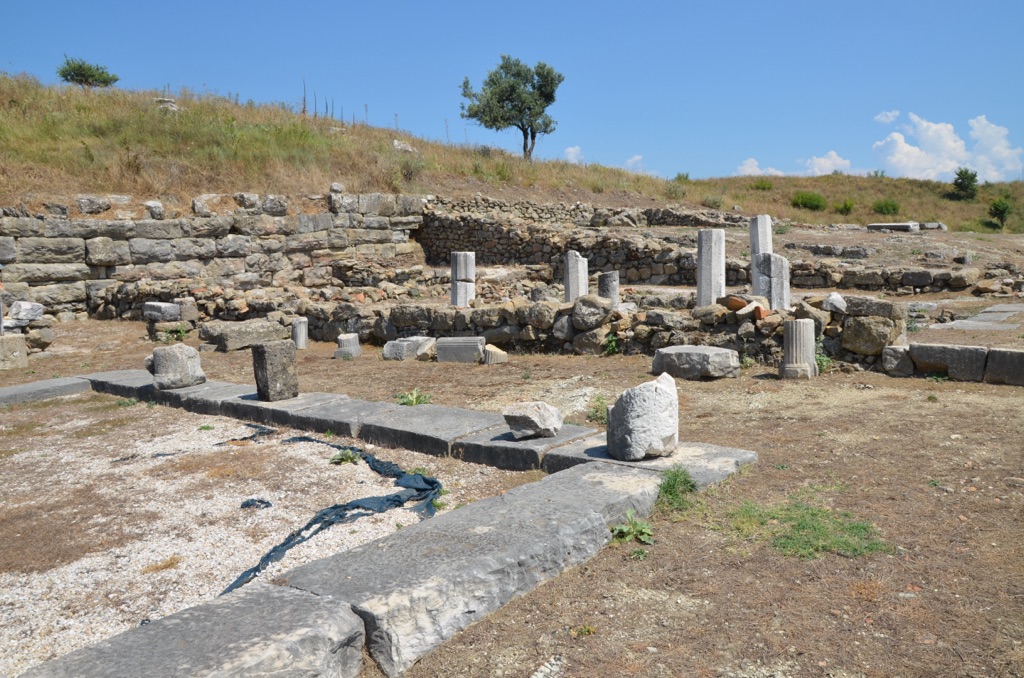Phoenice, also known as Phoenicia, was an ancient civilization centered in the north of ancient Canaan, with its heartland along the coastal regions of modern-day Lebanon, Syria, and northern Israel. Phoenician civilization was known for its seafaring expertise, trade networks, and the spread of the Phoenician alphabet, which is the ancestor of most modern alphabets. The Phoenicians were influential in the Mediterranean from around 1500 BC to 300 BC, establishing colonies and trading posts throughout the region, including the famed city of Carthage.
Get your dose of History via Email
Historical Background of Phoenice
The discovery of Phoenice’s historical significance came through ancient texts and archaeological findings. The Phoenicians left behind few written records, so much of what we know comes from Greek and Roman sources. Archaeologists have unearthed ruins of ancient cities, such as Byblos, Tyre, and Sidon, which were major centers of Phoenician civilization. These cities reveal a history of habitation that dates back thousands of years.
Phoenicians were master shipbuilders and sailors who ventured beyond the Mediterranean Sea. They established trade networks that reached the British Isles and West Africa. The Phoenician alphabet, a significant contribution to the world, was developed by these ancient people. It greatly influenced the Greek alphabet and, by extension, all Western alphabets.
Throughout history, various empires conquered Phoenician cities, including the Assyrians, Babylonians, and Persians. Alexander the Great took over these cities in the 4th century BC. Despite these conquests, Phoenician culture and influence persisted, especially in their western colonies like Carthage, which became a major power in the Western Mediterranean until its defeat by Rome in the Punic Wars.
Phoenicia was not just a single political entity but a network of city-states. Each city was independent, with its own government and gods. However, they shared a common language, culture, and identity. The Phoenicians are also credited with spreading the cultivation of the purple dye extracted from the murex snail, which became a symbol of royalty in the ancient world.
The decline of Phoenician power began in the 6th century BC, but their legacy endured through their colonies and cultural contributions. The Phoenician alphabet, maritime skills, and artistic achievements are lasting testaments to their historical importance.
About Phoenice
Phoenice was a region rather than a single site, encompassing several city-states along the Mediterranean coast. These cities were built with impressive fortifications and harbors, reflecting their maritime prowess. The buildings were typically constructed from local materials, including timber from the abundant cedar forests of Lebanon, which were highly prized in the ancient world.
The architecture of Phoenice included temples, palaces, and common houses. The temples often featured high podiums and were dedicated to various gods such as Baal, Astarte, and Melqart. The palaces were grand and served as the residences of the elite and ruling classes. Common houses were usually made of mud-brick with stone foundations.
Phoenician art and craftsmanship were renowned, particularly their work with glass, metals, and ivory. They produced intricate jewelry, carved amulets, and detailed sculptures. Their pottery, though less celebrated than that of the Greeks, was functional and often featured maritime themes reflective of their seafaring culture.
The Phoenicians were also known for their shipbuilding techniques. They constructed galleys and trading ships that could navigate the open seas. These vessels were essential for their extensive trade networks, which transported goods such as wine, olive oil, and the famous Tyrian purple dye.
Urban planning in Phoenician cities was advanced for its time. Streets were laid out in a grid pattern, and there were public spaces and marketplaces. The cities were cosmopolitan centers where people from different cultures interacted, leading to a rich exchange of ideas and goods.
Theories and Interpretations
The exact origins of the Phoenician civilization are still debated among historians. Some theories suggest they originated from earlier Canaanite populations, while others propose a convergence of various ethnic groups. The Phoenicians’ seafaring nature has led to speculation about their possible reach and influence, including theories about their presence in the Americas, though these are not widely accepted.
The purpose of some Phoenician structures and artifacts has been subject to interpretation. For example, their religious practices and the role of child sacrifice in their rituals are debated, with some scholars relying on accounts from ancient writers and others questioning the veracity of these claims.
Mysteries also surround the extent of Phoenician exploration. Their potential voyages to the British Isles for tin and the establishment of distant colonies are areas of ongoing research. The Phoenicians’ role in transmitting the alphabet to other cultures is well-documented, but the exact process of this transmission remains a topic of scholarly interest.
Dating Phoenician artifacts and ruins has been carried out using various methods, including carbon-14 dating and stratigraphy. These techniques have helped establish a timeline for Phoenician history and the age of their settlements.
Interpretations of Phoenician history are often complicated by the lack of primary sources. Much of what is known comes from second-hand accounts by Greek and Roman authors, who may have had their own biases. As a result, modern historians must piece together a picture of Phoenician civilization using a combination of archaeological evidence and critical analysis of ancient texts.
At a glance
- Country: Modern-day Lebanon, Syria, and northern Israel
- Civilization: Phoenician
- Age: Circa 1500 BC to 300 BC
Conclusion and Sources
- Wikipedia – https://en.wikipedia.org/wiki/Phoenicia

